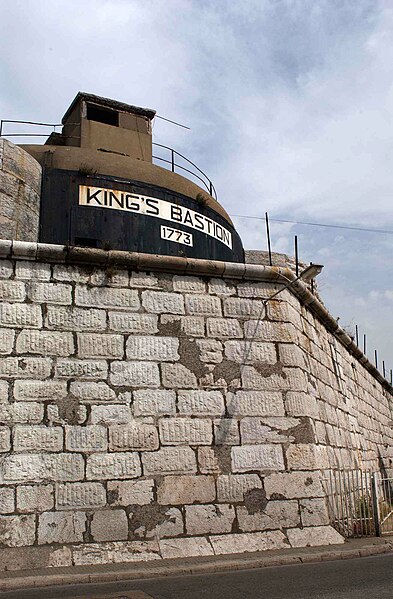Soldier Artificer Company
The Soldier Artificer Company was a unit of the British Army raised in Gibraltar in 1772 to work on improving the fortifications there. It was the Army's first unit of military artificers and labourers – the existing Corps of Engineers was entirely made up of commissioned officers – and it replaced the traditional but unreliable practice of employing civilian craftsmen. The company was an immediate success and was responsible for upgrading the British fortress's defences before the Great Siege of Gibraltar.
Members of the Soldier Artificer Company in uniform, circa 1786
Members of the Soldier Artificer Company in their working dress
King's Bastion, built by the Company between 1773–76
Mock-up showing members of the Soldier Artificer Company digging the Upper Gallery
The Great Siege of Gibraltar was an unsuccessful attempt by Spain and France to capture Gibraltar from the British during the American Revolutionary War. It was the largest battle in the war by number of combatants.
The Sortie Made by the Garrison of Gibraltar, John Trumbull
Martín Antonio Álvarez de Sotomayor—Spanish army commander
George Augustus Eliott, 1st Baron Heathfield—British Governor of Gibraltar
Panoramic view of Gibraltar under siege from Spanish fleet and land positions in foreground








